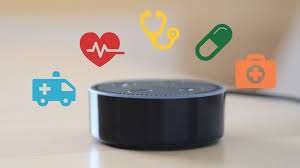Nuance Audio is a new option for people who resist traditional aids, from the company that makes Ray-Bans and operates LensCrafters.
Seekers of Meaning Podcast Posted Online March 7, 2025
What's Next Longevity Deal Talk Episode 32, January, 2025
Presentation: What's Next Longevity Venture Summit, June, 2025

 Technology was essential for many adults stuck at home during the pandemic, providing some social connection, access to online shopping, home delivery services, and requests for transportation. But it also became apparent that some
Technology was essential for many adults stuck at home during the pandemic, providing some social connection, access to online shopping, home delivery services, and requests for transportation. But it also became apparent that some  October 2020 -- when the fall travel season never started. And the unthinkable has become normal. These days it seems like businesses only congregate in Zoom-like rooms. But despite that, product announcements and innovations appear despite the missing in-person fanfare. The 30+ research report interviews are complete and the writing begun for "The Future of Remote Care Technology and Older Adults." The goal -- publish in early December in conjunction with the
October 2020 -- when the fall travel season never started. And the unthinkable has become normal. These days it seems like businesses only congregate in Zoom-like rooms. But despite that, product announcements and innovations appear despite the missing in-person fanfare. The 30+ research report interviews are complete and the writing begun for "The Future of Remote Care Technology and Older Adults." The goal -- publish in early December in conjunction with the  What is the status and future of remote care technologies? As the research interviews for the 2020 report “Future of Remote Care Technology and Older Adults” wind down, a few themes become apparent. This work
What is the status and future of remote care technologies? As the research interviews for the 2020 report “Future of Remote Care Technology and Older Adults” wind down, a few themes become apparent. This work  Voice-enabled innovation softly races ahead. Technology innovation announcements whiz by at what seems to be a breakneck pace. Consider
Voice-enabled innovation softly races ahead. Technology innovation announcements whiz by at what seems to be a breakneck pace. Consider  The boomer-and-beyond market has caught the eye of the tech industry.
The boomer-and-beyond market has caught the eye of the tech industry.  It’s been an interesting technology week
It’s been an interesting technology week Venture interest in Aging in Place – is it a turning point?
Venture interest in Aging in Place – is it a turning point?